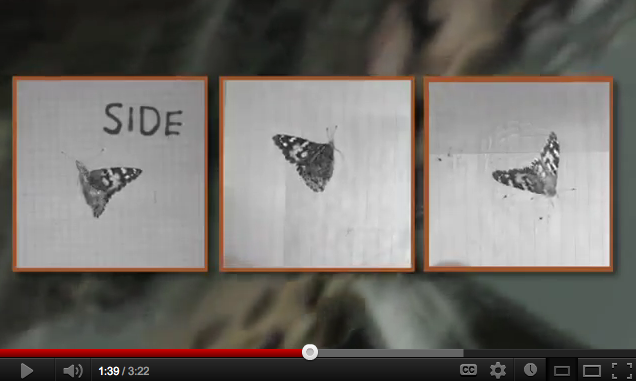The Painted Lady butterfly, Vanessa cardui, claims the title as most common butterfly in North America–and inhabits almost every corner of the globe. The multi-colored flutterers brag five white spots on each black-and-orange forewing and have been tapped

The Painted Lady Butterfly is being studied to develop micro aerial vehicles, MAVs.
for elementary school science classes for years since they are readily available and can complete their life cycle on an artificial diet. In the wild, Painted Ladies host on thistle and a variety of common weeds.
But now this common butterfly is helping scientists figure out the intricacies of micro aerial maneuvering in a study at John Hopkins University that will hopefully lead to refinements in a new class of tiny flying machines: micro aerial vehicles, or MAVS.
A team of researchers at the Maryland campus has received funding from the U.S. government to study flight in butterflies with the intent to develop tiny flying robots that can be used for intelligence gathering, reconnaissance, and search-and-rescue missions.

Butterfly inspired flapping wing MAV “micro aerial vehicle” –photo courtesy Harvard University
“We look to nature for inspiration,” said Tiras Lin, an undergraduate mechanical engineering student at John Hopkins who is working on the study. “What can we learn from the flight…of a butterfly?”
A lot, apparently.
Lin and his team used three high speed 3-D cameras to closely observe tthe Painted Lady’s amazing agility and maneuverability. Click on the second photo in this post to see the video and some of the fascinating footage.
He compared the creature’s aerial maneuvers to those of an ice skater, suggesting that like a spinning skater, they “alter their moment of inertia” depending on whether they want to speed up or slow down.
Rajat Mittal, a professor of mechanical engineering at John Hopkins and who is overseeing the study, pointed out that mechanical engineers typically are well-suited and successful at designing large things like aircraft or ships” but when it comes to designing small things we are fairly deficient.”
The Painted Lady is providing insight and inspiration, making her not so common after all.


Leave A Comment